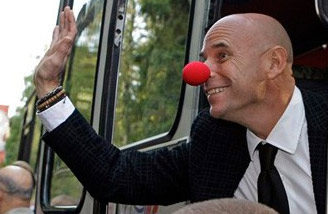
|  |  |  Technology News | November 2009 Technology News | November 2009  
Russia: No Space for Tourists
 Associated Press Associated Press
go to original
November 27, 2009


| | Canadian Cirque du Soleil founder Guy Laliberte returned to Earth last month after a stint as the seventh paying space tourist aboard the station. |  |
Star City, Russia - There is no space for tourists wishing to fly to the International Space Station, a top Russian space official says.

Since the space station's crew doubled to six people earlier this year, there is no longer room for tourists who pay tens of millions of dollars for a trip on a Russian spacecraft from Earth, said Sergei Krikalyov, the chief of the Cosmonaut Training Center.

Russia's Soyuz spacecraft will provide the only link to the station after the planned retirement of the U.S. shuttle fleet next year.

Each Soyuz craft can accommodate three people. With the doubling of the station's permanent crew, Russia will now make four, rather than two, launches each year to allow for crew rotation. A permanent crew of six means the space program has to have two Soyuz ships permanently docked at the station to be used in case of emergency.

Canadian Cirque du Soleil founder Guy Laliberte returned to Earth last month after a stint as the seventh paying space tourist aboard the station. Laliberte, the first professional artist to fly to space, paid $35 million for a 10-day trip to the station.

"When there was a spare place, the space tourist could fly together with the main crew and return back with them," Krikalyov told reporters at the training center in Star City outside Moscow. "Now that we have switched to a six-person crew, there is no spare room."

Krikalyov added without elaboration that "the situation will remain the same for the nearest flights."

Krikalyov spoke during exams for a crew set to blast off for the station in late December. The crew includes Russian Oleg Kotov, Soichi Noguchi of Japan and NASA astronaut Timothy J. Creamer.

The mammoth station consists of 10 modules built by the United States, Russia, Canada, Japan and the 18-nation

European Space Agency. Doubling of its permanent crew will allow other nations to send their astronauts to the station, which had mostly been manned in the past by Russian and U.S. crew members.
|

 |
|  |



